This article discusses which roof is better in terms of basic characteristics, as well as discusses in detail the main types of roofing and lists their advantages and disadvantages.
The modern construction market offers a wide range of different roofing materials. Therefore, when building a house or replacing an old roofing with a new one, the question often arises - which roof is better, how to choose the right roof that will provide the best protection for the house from various precipitation and wind, and give the house the most attractive appearance.
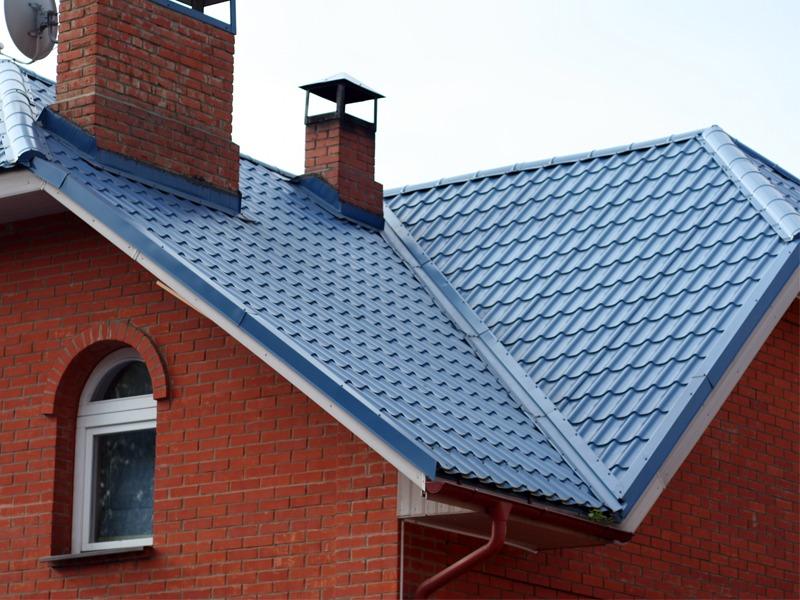
The most popular types of roofing are soft and metal roofing, slightly less popular are euroslate, cement-sand and natural tiles, as well as seam roofing.
As an example, let's try to compare which roof is better - metal or soft, weighing and evaluating the various advantages and disadvantages that these competing roofings have:
- Lifetime. Both for metal tiles and for flexible tiles, manufacturers declared approximately the same service life, which is fifty years for both materials.
At the same time, manufacturers give a guarantee for these materials for a much shorter period - 10-15 years for metal tiles, and from 10 to 30 years - for soft roof.
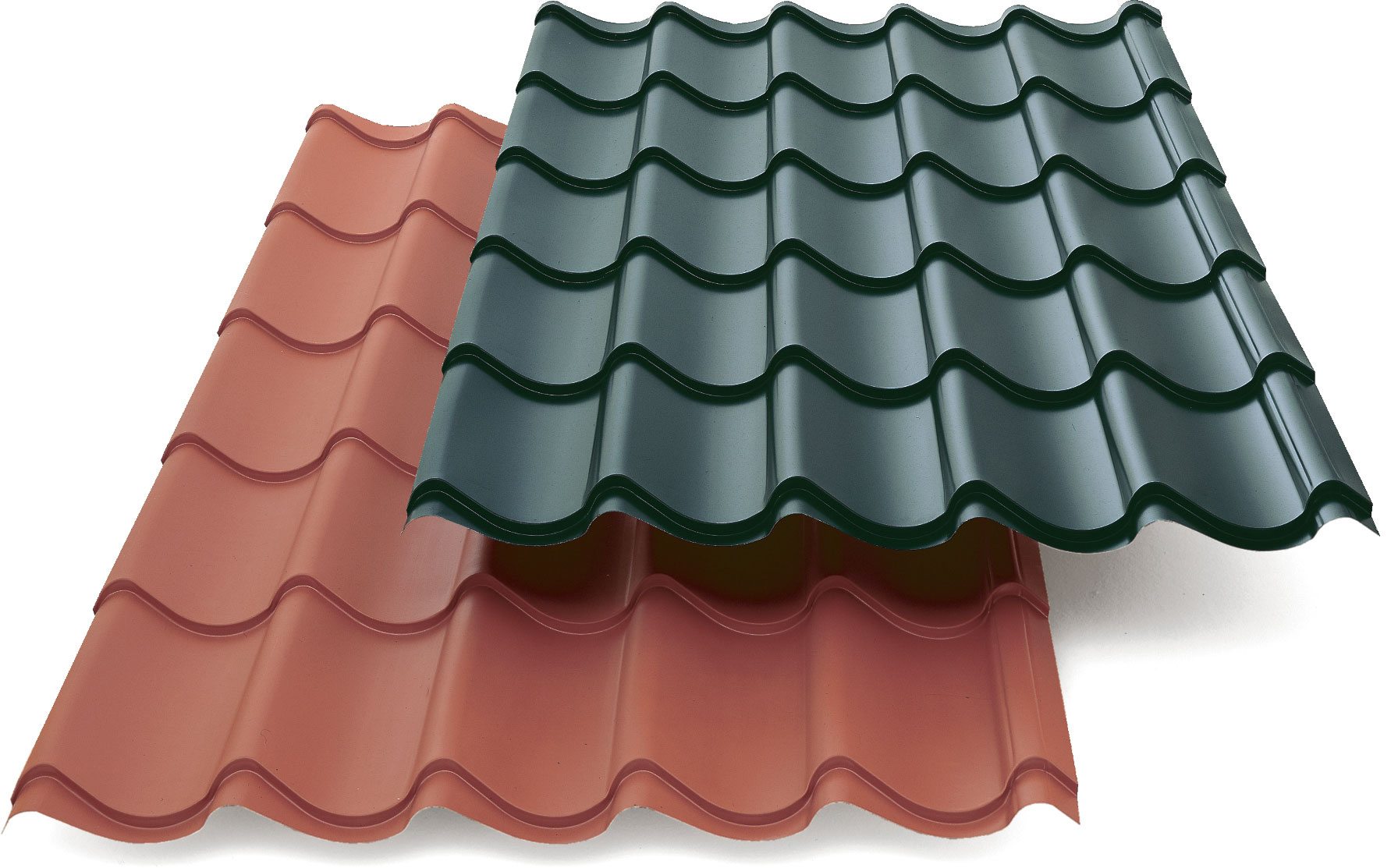
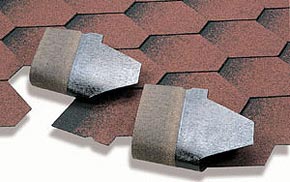
- Process installation of metal tiles is faster and simpler, and also has a lower cost. However, self-construction of a soft roof is a little easier, although it takes much more time.
This is due to the fact that soft roofing is much easier to measure and cut, and almost anyone can nail it with a hammer and nails without any preparation.
The main difficulty in this is to lift sheets of soft tiles onto the roof, one package of which weighs about 30 kilograms with an area of 3 square meters.
The weight of a metal tile is two to three times less, but its sheets are much more difficult to process, especially in the case of large sizes. For laying a large sheet of metal tiles, outside help is required.
If the installation of these materials is carried out by hired workers, then metal tiles are definitely more preferable, since the work will be completed faster, and their cost will be two to three times lower. - One of the most important criteria when choosing the type of roof is the cost of the material. It is in connection with the final cost of roofing that many developers choose metal tiles instead of soft roofs as a result.
In the case of the same cost of flexible tiles and metal tiles, in the end result, metal tiles are cheaper by about half.
This is due to the more complex arrangement of the roofing cake, since a flat, continuous surface must be prepared for a soft roof.
For this, moisture-resistant plywood or OSB-3 boards are most often used, which increase the total cost per square meter of roofing by an average of 150-200 rubles. In addition, it is recommended to lay a lining carpet on the entire surface of the flexible tile or in those places where leaks are most likely, which increases the cost per square meter by another 80 rubles.
Other elements, such as cornice strips, end strips, self-tapping screws, nails, etc., have approximately the same cost for both roofing options, so the cost of a soft roof is twice as expensive as a metal roof only due to the use of OSB-3 boards and underlayment carpet .
Important: it should be borne in mind that in the case of a complex shape of the roof, which includes a large number of different elements, the cost of a roof made of flexible tiles can be compared with the cost of a metal roof.
This is due to the fact that when covering such roof structures, a lot of scraps of metal tiles are formed, the amount of which reaches 30% of the total volume of the material.
At the same time, the percentage of soft roof waste, regardless of the shape of the roof, is rather low and amounts to only 3-5%.
- Coating appearance. In this case, everything depends more on the individual preferences of the developer, since the metal tile has several types of profiles that differ in height, but in any case are an imitation of natural tiles.
The color scheme includes several dozen different shades, the most popular of which are brown, red and green. M
soft tiles offer a much wider choice of different material forms, each of which is made in different color shades. - Soft roofing and metal tiles also differ in their performance and maintenance..
Quite often, buyers choose a soft roof due to one of its most important advantages - noiselessness.
Flexible tiles, unlike metal tiles, can make even the sound of heavy rain almost inaudible. In the case of metal tiles, to muffle sounds, it is necessary to carefully insulate the space under the roof, although this characteristic can be conditionally called its advantage, which allows you to find out that it is raining without looking out the window, and also in the morning to be sure that it rained at night and the garden is already watered.
It is recommended to install snow retainers both on soft roofs and on metal tiles. At the same time, a metal tile differs from a soft roof in that the snow descends from it in the form of an avalanche, which often necessitates the repair of drainage systems in the spring, since under the action of large snow masses the drains quite easily come off.
This safety element is necessary for those who live in the house permanently and risk being under a snowball or ice block during the cold season, which can also damage property - for example, a car standing near the house. In the case of soft roofs, snow avalanches occur much less frequently, so the installation of snow retainers is not so critical.
In terms of maintenance, the differences between metal roofing and soft roofing are minimal. In both cases, it is necessary to remove various debris from the roof - branches, leaves, etc., to clean the snow as it accumulates on the roof.
Important: in the case of a roof made of metal, after a short period of time it may be necessary to tighten the screws or replace them in case of poor quality fasteners.
Let us now consider the main types of roofs in more detail, so that it is easier to choose the most suitable coating in accordance with specific conditions and parameters.
metal tile
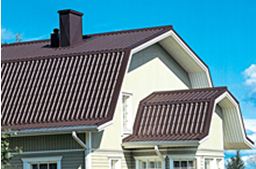
For the manufacture of metal tiles, galvanized cold-rolled steel coated with polymers is used.
The technology for manufacturing such steel in industrial conditions is quite complicated and includes several stages:
- Galvanized steel sheet is coated with a phosphate coating that protects against corrosion;
- Next, a primer is applied to the sheet;
- Cover the back side of the sheet with a special protective varnish;
- The outer side is covered with a special protective polymer coating (plastisol, polyester, matt polyester, pural, etc.).
In the manufacture of metal tiles directly, steel sheets are profiled using special equipment, giving it a pattern that imitates natural tiles. Mainly due to this pattern, this material is one of the most common roofing materials in modern private construction.
The construction market offers metal tiles of domestic and foreign production. At the same time, both imported and domestic raw materials can be used for the manufacture of Russian metal tiles.
Flexible roof tiles
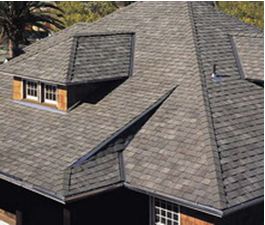
Shingles are also known by the following names:
- Flexible tiles;
- Soft roof;
- Shingles.
This material is made in the form of small flat sheets, the standard size of which is 100x33 cm. One edge of the sheets is provided with curly cutouts.
The range includes various forms of shingles tiles:
- Hexagonal;
- Rectangular;
- Wavy;
- oval, etc.
In addition, this material has a wide variety of color shades, depending on the specific manufacturer.
The basis of bituminous shingles is fiberglass impregnated with bitumen or organic cellulose. This base performs the function of reinforcement, which ensures the connection between two layers of oxidized bitumen, which also includes various polymer additives that provide the material with sufficient strength, ductility and resistance to deformation.
The upper part of the flexible tile is covered with mineral chips, basalt granulate or copper coating, which allows you to give the material a variety of color shades, and also protects it from both negative climatic influences and exposure to sunlight.
The reverse side of this material is covered:
- An adhesive layer of special bitumen, which is additionally protected with a plastic film - this option is called self-adhesive tiles.
- Silicon sand, which prevents the tiles from sticking together during storage and transportation, is a traditional tile.
Euroslate
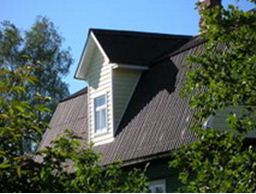
Euroslate, which is also called "Ondulin" in honor of one of the largest producers of this material in the world, is one of the most common roofing materials in our country.
This material is produced in the form of corrugated sheets made of cellulose, which is impregnated with bitumen and painted under high temperature and pressure.
The result is a durable and lightweight material that is resistant to moisture, which makes it almost ideal for building roofs, as well as cladding house facades.
In the manufacture of euroslate, environmentally friendly materials are used. Its sheets are easily cut, bent, not subject to decay and rust. Installation of this material is quite simple and leaves almost no waste. Sheets are typically guaranteed for 5 years for color fastness and 10 to 15 years for water resistance.
natural tile
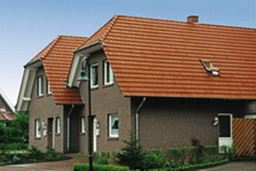
Natural tiles, which have unsurpassed aesthetics, reliability and durability, have been used in roofing since ancient times. Covering the roof with this material makes the appearance of the house more solid and blends well with the surrounding area.
Under a tiled roof, there is always healthy dry air, there is no rain noise and no temperature changes are felt. This material does not require additional care for many years, without changing color over time and without losing visual appeal.
The repair of such a coating is quite simple and consists in the usual replacement of individual elements of the coating.
The service life of the material is 100-150 years, and the guarantee for it is 30 years. There are ceramic and cement-sand tiles, and both materials are environmentally friendly.
Decking
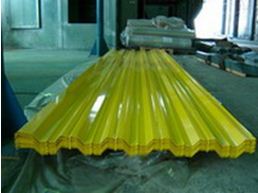
Profiled steel sheet, or corrugated board, is made from galvanized steel sheets with polymer coatings. This material, as well as the metal tile, is well protected against corrosion and is presented in various color shades.
Decking is used not only as roofing, but also for cladding walls, fences, partitions, etc. Roof installation and walls made of this material is quite simple and does not require special knowledge and skills.
Decking is widely used due to a number of positive qualities:
- Long service life;
- Wide range of colors;
- Ease of transportation and installation;
- Aesthetic appearance, etc.
seam roof
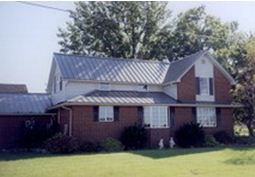
Seam roofing is a metal roofing made of galvanized rolled or sheet steel or non-ferrous metals such as copper or aluminum, in which individual elements are fastened together with folds.
Proper execution of the fold allows you to completely prevent the occurrence of leaks, and high quality metal ensures the durability and attractiveness of the roof.
Most often, when installing seam roofs, technology with a double standing seam is used. This method of joining metal sheets has been used for a long time, since the roof is aesthetic and airtight, since fastening is carried out without holes and seams that reduce the reliability of the structure. The ribs formed by the folds increase the rigidity of the coating, and also direct the descending masses of water and snow.
Flat roof materials
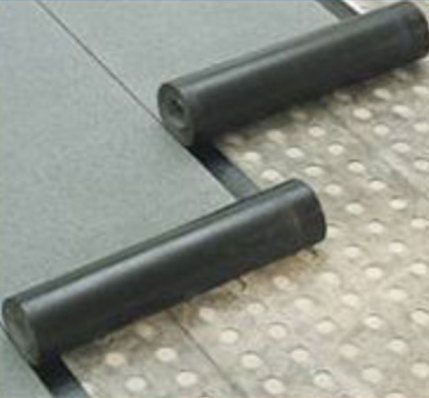
For flat roofs, rolled bituminous welded roofing materials are also used, having a synthetic base, such as polyester, not subject to decay, or fiberglass (glass fiber or fiberglass), coated on both sides with bitumen or bitumen-polymer binders.
The basis of materials is impregnated with modified bitumen, resistant to thermal and mechanical damage. Laying of built-up roofs in the process of erecting a flat roof or waterproofing the foundation of a building is carried out by fusing on a pre-prepared base using a propane burner.
Having considered the main types of roofing, it becomes clear that it is impossible to unequivocally answer the question - which roofing is better. Each material has its pros and cons, which should be weighed when choosing, as well as ask for the opinion of other people who have used these materials. Based on this, a personal opinion is formed, which will help to make the right choice.
Did the article help you?
